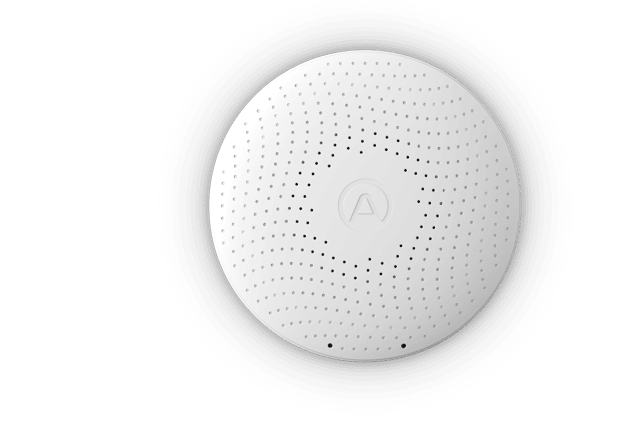Do I need a radon detector? What are the symptoms of radon in the home, and how does a detector work?
This article contains affiliate links. We may earn a small commission on items purchased through this article, but that does not affect our editorial judgement.


Have you heard of radon? No, this writer hadn’t either – until it came time to buy my new home.
Radon is a naturally occurring colourless and odourless radioactive gas that’s in the ground beneath our feet.
According to Public Health England, radon ‘increases your risk of lung cancer and causes over 1,100 deaths from lung cancer each year in the UK, especially among smokers’.
Thankfully, it is of no concern when you’re outdoors but it can become an issue in your home, which is why radon is always mentioned when buying or selling a property.
Public Health England recommends that ‘radon levels should be reduced in homes where the average is more than 200 becquerels per metre cubed (200 Bq m-3)’.
Apparently, in areas of higher radon (usually those with granitic type soils), the gas seeps into homes from beneath and if the house is poorly ventilated, it can lead to much higher radiation levels than normal.
In these instances, the home owner is advised to call in a radon mitigator to evaluate the situation.
Since radon levels fluctuate daily, a detector will be installed in your home for a few months at a time and, if required, a sump (a fan system under the floorboards at a cost of around £2,000) may be advised to ventilate the home.
That said, some cases of radon can be mitigated simply by leaving a few more windows open, though this solution is not ideal as winter approaches.
Now, before you worry, the affects of radon can take years to materialise (and possibly not at all if you’re not radon sensitive), and there are many homeowners around the world situated in areas of high radon levels that haven’t done anything about it (places in the world considered to have a ‘High Risk’ level of radon include the whole of Cornwall, much of Scandinavia, the Alps and most of the USA’s eastern seaboard).
Nevertheless, it’s always better to be safe than sorry so, if in doubt, fit a radon detecting device.


Radon detectors need to be situated in the home for a few months at a time before they can accurately tell you whether or not you need to take action, and that’s the case with this excellent model from Airthings.
The Wave Plus doesn’t emit any alarms but it does give you a running tally of radon levels in the home after a period of time. It also monitors other negative health-related household pollutants like CO2 and TVOCs (total volatile organic compounds), plus standard ambient conditions like humidity, temperature and air pressure.
Incidentally, Airthings also produces a radon-only device in case you have no desire for this model’s other functions.
The Wave Plus syncs to your mobile device via Bluetooth and uses the Airthings Wave app (iOS and Android) to keep tabs on everything in real time along with tracking radon levels over a longer period of time.
However, for instant peace of mind, you can also wave your hand in front of the device and it will light up in green if everything’s tickety boo, orange if it’s not so dandy and red if it’s properly dodgy.
This writer lives in a high radon area and so far my highest radon reading on the Wave Plus is 51Bq m-3 and my lowest just 4. Fingers crossed